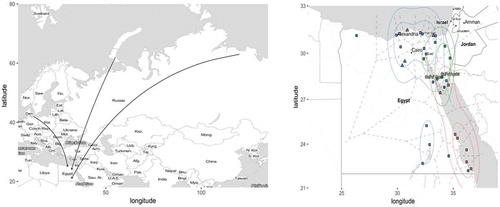Figures & data
Table 1. Avian influenza viruses isolated from wild birds sampled in Egypt during 2003–2018. The virus pathotype (highly pathogenic avian influenza [HPAI], low pathogenic avian influenza [LPAI] or not determined [n/d]) are indicated for viruses of the H5 subtype, remaining viruses were LPAI.

